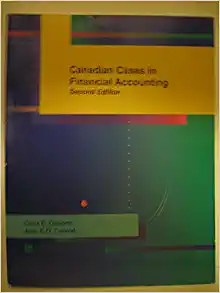Question
You are an Audit Senior currently planning the 30 June 20X8 audit of Forest Limited, an Australian-owned company that produces and exports woodchips to Japan.
You are an Audit Senior currently planning the 30 June 20X8 audit of Forest Limited, an Australian-owned company that produces and exports woodchips to Japan. Forest's operations are located in Eden, on the far south coast of NSW. Timber is purchased from forests nearby, processed into woodchips and immediately stockpiled for export at the company's shipyards at Twofold Bay. Forest contracts timber cutters to deliver set tonnages of logs to its mill throughout the year. Woodchips are transported to Japan on charter vessels, which make an average of one trip a month.
At a recent planning meeting with Forest Limited's senior staff, you obtained the following overview of this year's operations:
A massive conveyor belt is used to transport the woodchips from the mill to the stockpile. The manufacturer of this belt was recently taken over by an overseas competitor of Forest Limited, Chipper Limited, which processes woodchips in several South-East Asian countries. Chipper Limited has indicated that it is willing to sell equipment to its competitors, but at double the price it will sell to its other customers. It is doubtful whether any other companies in the world manufacture such specialised conveyor belts.
Based on current usage figures, it is expected that the existing conveyor belt will last until December 20X9. Sufficient spare parts are on hand to carry out routine maintenance work. However, should a replacement belt be required, it would take at least six months to have a replacement made and shipped to Australia, and a further four weeks to install and test it. It is unlikely that the company could survive a six-month interruption to normal operations. Management are currently deciding whether they should order a replacement belt from Chipper Limited despite the excessive cost, or continue to search for an alternate supplier.
Timber is purchased in 50 hectare lots from plantations and state forests. In the past, 70% of timber was sourced from plantations, however this has fallen to 50% in the current year. The corresponding increase in timber sourced from state forests has angered environmental groups. Protests have been held in several forests, which has slowed production and frustrated the contractors, who are only paid once set tonnages of timber are delivered to the mill. In addition, several shipments of woodchips have been delayed, angering the Japanese customers who are threatening to deduct 20% from amounts owing as compensation for lost production time.
Last month, a protester suffered a broken leg, allegedly because he was hit by a timber truck. The protester was blocking the main access road to one of the state forests at the time of the accident. The protester is now suing Forest Limited for damages, claiming the contractor was in fact an employee of Forest Limited at the time of the accident, and was acting on Forest Limited's instructions. Forest Limited is fighting the case and appears to have a reasonable chance of winning; however, the adverse publicity being
generated is making the state government nervous about selling Forest Limited any more of its timber resources.
One of Forest Limited's customers, Wood Limited, is claiming that the latest batch of woodchips it received was contaminated with a microbe. This microbe affects the physical structure of the chips, reducing the pressure the chips can withstand when compressed. This has made the chips useless for heavy duty items such as desks and bookcases. Wood Limited is refusing to pay its account, which is already five months overdue. Forest Limited has launched an investigation into the allegations, but as yet has not been able to substantiate them.
In January, Forest Limited upgraded its accounts payable system to a fully integrated package that automatically updates the general ledger when creditor entries are made. Some problems have been experienced with the creditors ledger, which is split into $US and $AUD amounts. In some cases, $US amounts have been recorded as $AUD, resulting in inaccurate creditor balances. Month-end rollovers have also proved problematic, with creditor balances being incorrectly re-set to zero at the first of every month. This has required each creditor's history to be re-entered manually each month, a time-consuming process that is taking accounting staff away from their normal duties.
During the period, the Australian dollar has remained steady against the Yen, although it fell by about 3% against the US dollar. Debtors are invoiced in $US at the time of shipment, and paid in $US one month after the shipment is received. It takes around six weeks for the charter vessels to travel from Twofold Bay to Japan. All plantations from which Forest Limited sources timber are owned by US firms, which demand payment in $US prior to the timber being cut. A recent downturn in the Japanese economy is affecting forward orders, which have fallen by 15%.
Required: a memorandum to the audit manager, outlining your risk assessment relating to Forest Limited. When making your risk assessment:
(a) identify three (3) key accounts from the information provided that are subjected to an increase in audit risk. Briefly explain what factors increase the audit risk associated with the three (3) accounts identified. In your explanation, please mention the key assertion(s) at risk of material misstatement and the components of the audit risk model affected for each account identified.
(b) Identify how the audit plan will be affected and recommend specific audit procedures to address the risks associated with each account identified
Step by Step Solution
There are 3 Steps involved in it
Step: 1

Get Instant Access to Expert-Tailored Solutions
See step-by-step solutions with expert insights and AI powered tools for academic success
Step: 2

Step: 3

Ace Your Homework with AI
Get the answers you need in no time with our AI-driven, step-by-step assistance
Get Started


